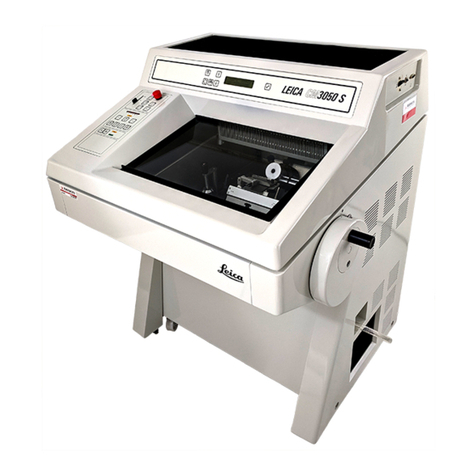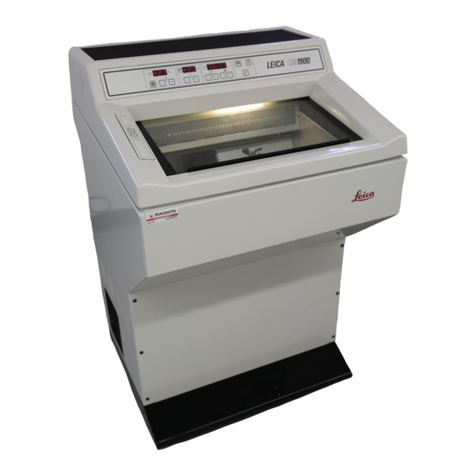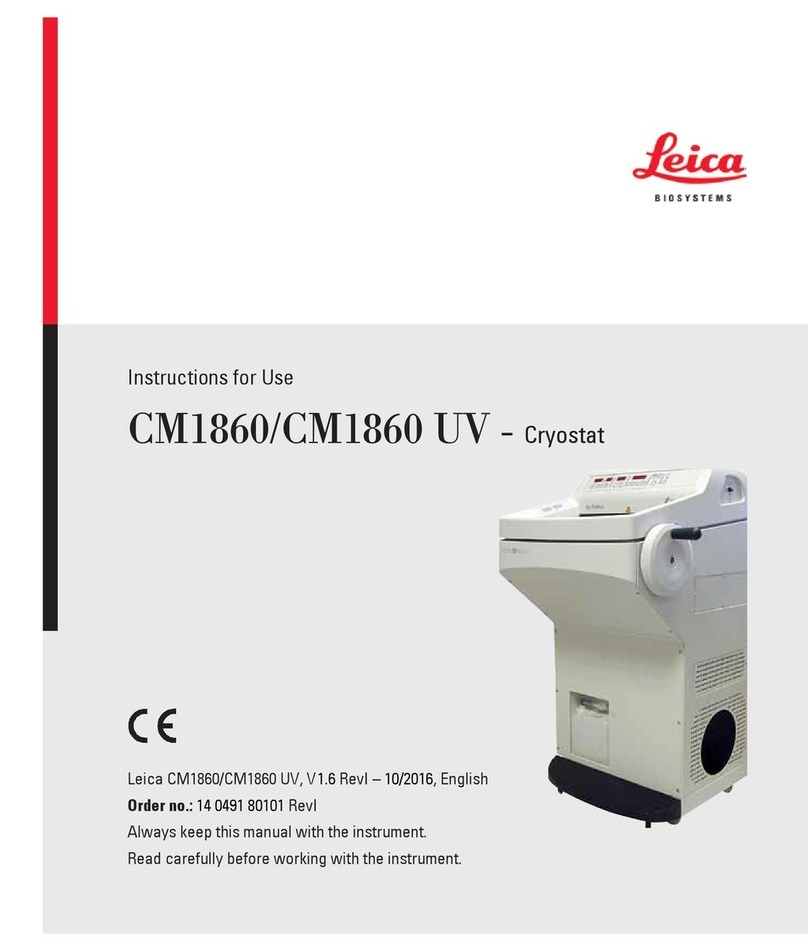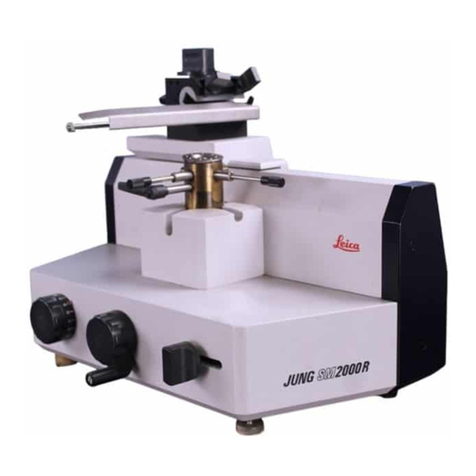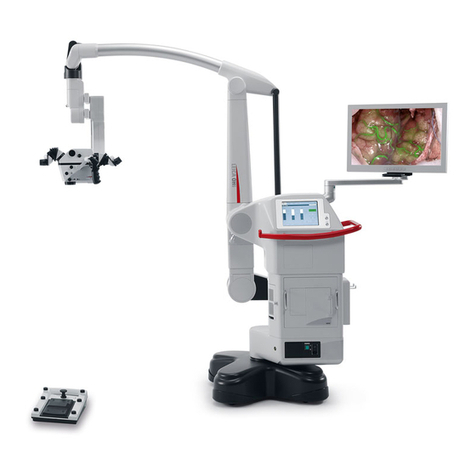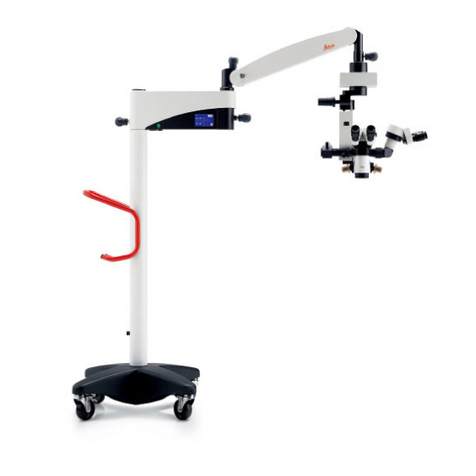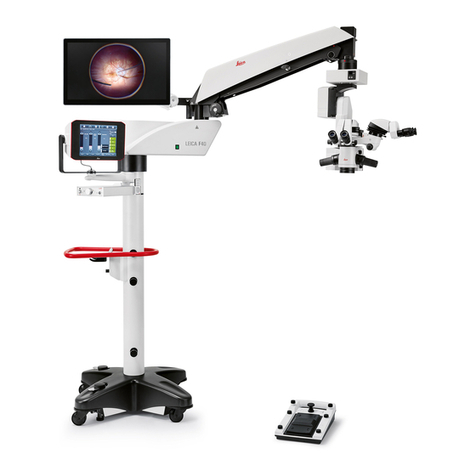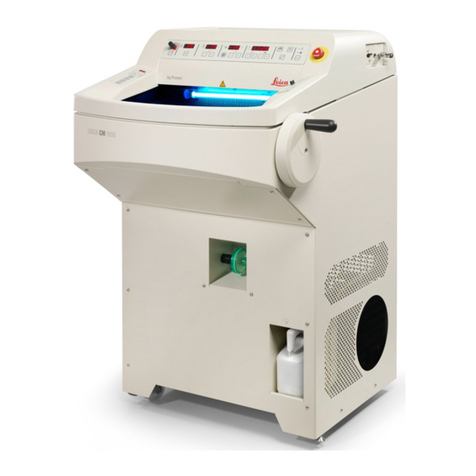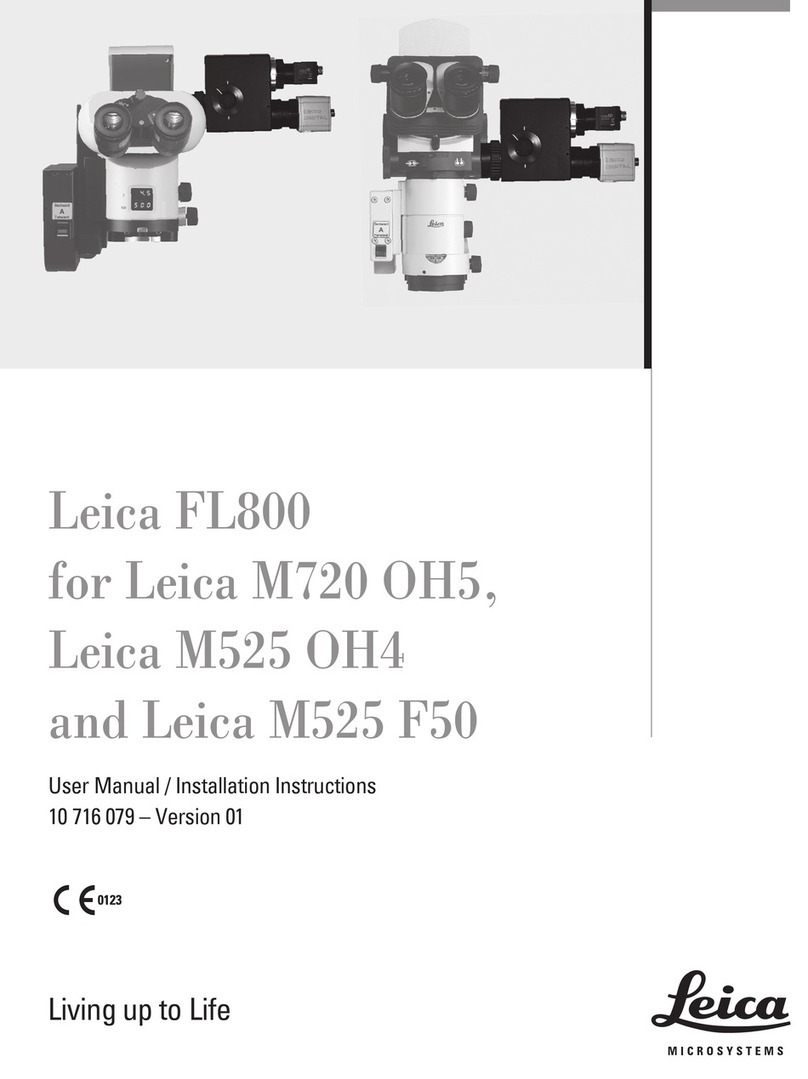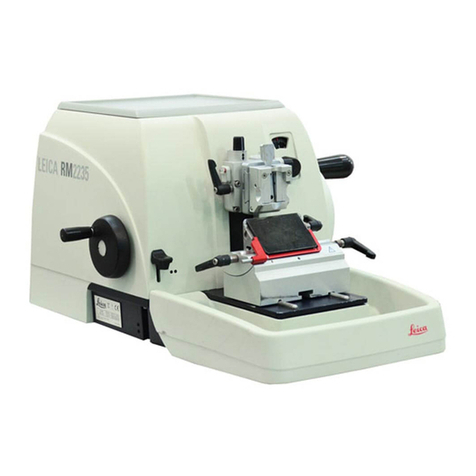Table of Contents
2Leica M501 / Ref. 10 711 785 / Version D
Page
Introduction
Design and function 4
Ceiling mounts 5
Controls
Control unit/lamp housing 6
Tilt head/focusing unit 6
Footswitch 6
Handswitch 7
Stand 7
Remote control for Leica Telescope Mount 7
Optics carrier 8
Binocular tube, eyepiece, tubes for second observer 8
Preparation for Operation
Retrofit the surgical microscope and balance
the swinging arm 9
Attach the binocular tube, eyepiece and objective 10
Set the interpupillary distance and eyepoint 12
Adjust for parfocality 12
Attach the adapter for accessories 13
Adjusting second-observer tube 14
Display/change the footswitch type 15
Switch the plus/minus movement directions
of the XY-unit 15
Disable/enable the function of the XY-Reverse button 15
Transport the surgical microscope 16
Position the surgical microscope at the OP stage 17
Sterile components 18
Setting the rest position on the Leica
Telescope Mount 18
Setting the rest position on the Leica Mini Mount 19
Use
Operating the surgical microscope 19
Positioning the microscope 20
Adjusting the focus 20
Adjusting the magnification 20
Adjusting the illumination 21
Setting the illumination type and the working distance
21
Safety Notes
Intended use 22
Directions for the operator of the instrument 22
Directions for the user of the instrument 22
Table 201 according to EN 60601-1-2:2001 23
Table 202 according to EN 60601-1-2:2001 24
Table 204 according to EN 60601-1-2:2001 25
Table 206 according to EN 60601-1-2:2001 26
Hazards associated with instrument use 27
Signs and labels 28
Page
Care and Maintenance
Changing the fuse 32
Changing the bulb 33
Inspecting the functioning 33
Notes on reprocessing of resterilizable products 34
Messages and Warnings
Ventilation 36
General malfunctions 36
Technical data
Electrical data 37
Microscope 37
Stands 38
Swing arm 39
Ambient conditions 39
Limitations of use 39
Standards 39
Dimensions 40







